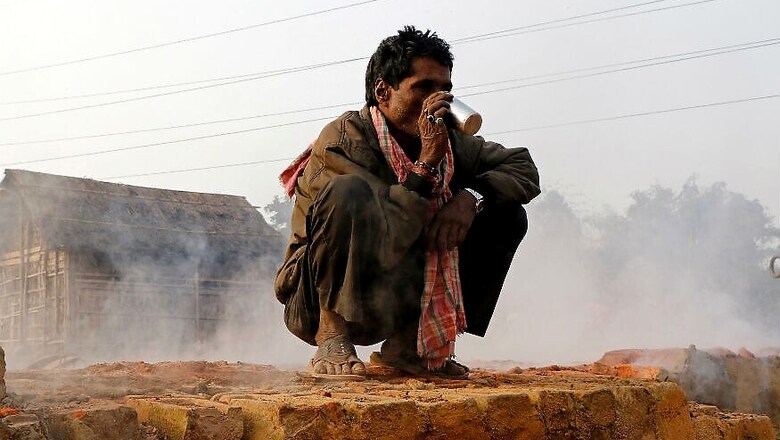
views
New Delhi: As Delhi’s air pollution breaches new records every year, there is more to worry than just the respiratory troubles.
While remedial measures taken by the Delhi government may be mitigating pollution woes, they are also playing a major role in leaving migrant construction workers jobless.
In November last year, when Delhi’s air pollution levels touched the ‘severe’ category, the Aam Aadmi Party (AAP) government was quick to ban construction work in the city. The same day, thousands of daily-wage construction workers lost their jobs and had to return to their villages.
It is normal practice to continue the ban on construction for almost a month. “It is generally during Diwali and the new year that we get the most amount of work but since the last three years we have had no work during this time,” said Naresh Kumar, a construction worker in Delhi’s Kalyanpur. He comes from Bihar and had travelled to Delhi in search of work five years ago.
Workers’ union heads have also recorded a falling return rate of workers. “There is a cost involved in travelling and staying. Since the last three years, construction workers, once they leave for home are not coming back in the same numbers,” said Satya Mallick, a Delhi-based union head.
The effect is for everyone to see at the city labour chowks, where workers assemble in the mornings for work. “The older and familiar faces are reducing now. They have gone back home. Delhi pollution has sent them back,” said Shekhar Gopal, a local employer for these workers.
It is a full cycle for these migrant workers. They travel to the cities mostly from the states of Uttar Pradesh and Bihar because of lack of jobs and are now having to go back due to no work in Delhi as well.
Most of them earn Rs 250-500 as daily wage (less than minimum wages for Delhi), and with their hand-to-mouth existence, even one day without work might mean having to sleep on an empty stomach.
Environment Pollution Control Authority (EPCA) had ordered a ban on all construction activities in Delhi-NCR from November 1 to 10, which was later extended to November 12, 2018.
For Ram Kumar, 33, it was financially wiser to travel back to Bihar’s Muzaffarpur than stay in Delhi without a pay. “I had to pay for my rent in the house that I am staying in Delhi. Will the government not charge us for electricity this month?” said Kumar while talking to News18.
The workers demanded alternative sources of income for the days during which construction work was banned.
The Building Workers’ Union marched to the residence of Delhi chief minister Arvind Kejriwal and labour minister and chairperson of the Delhi Building and Other Construction Workers Welfare Board Gopal Rai on November 8, 2018. In certain pockets of the city they also spoke to the builders to provide them with a compensatory pay, however, none of that materialised.
“We are paid on a daily basis. We do not have any other source of income. How do they expect us to live?” added Kumar.
One must also understand that migrating was not a choice for these workers. Severe lack of employment in rural areas forced them to do so. This can be ascertained from the fact that roughly 57 percent of migrant construction workers found their present living conditions in the city to be worse than their households in villages, according to a survey conducted by institute of Human Development, a Delhi-based think-tank.
The survey also shows that most of the migrant workers reported poor education status, with 65 percent of them reporting their education status as below primary education. This further makes it difficult for them to find other jobs.
According to a 2016 study, some of the reasons for Delhi’s poor air were identified as car emissions, the city’s coal-fired power stations and rubbish fires, both small and mountainous. Dust kicked up by cars along Delhi’s vast and growing road network contributes between a third and 56 percent of the most harmful pollutants in the city’s atmosphere.
The city’s construction sites, and the production of the raw materials that feed them – such as bricks and concrete – are also an outsized contributor to the foul air that some lung specialists warn is making Delhi hazardous, particularly for children and the elderly.




















Comments
0 comment